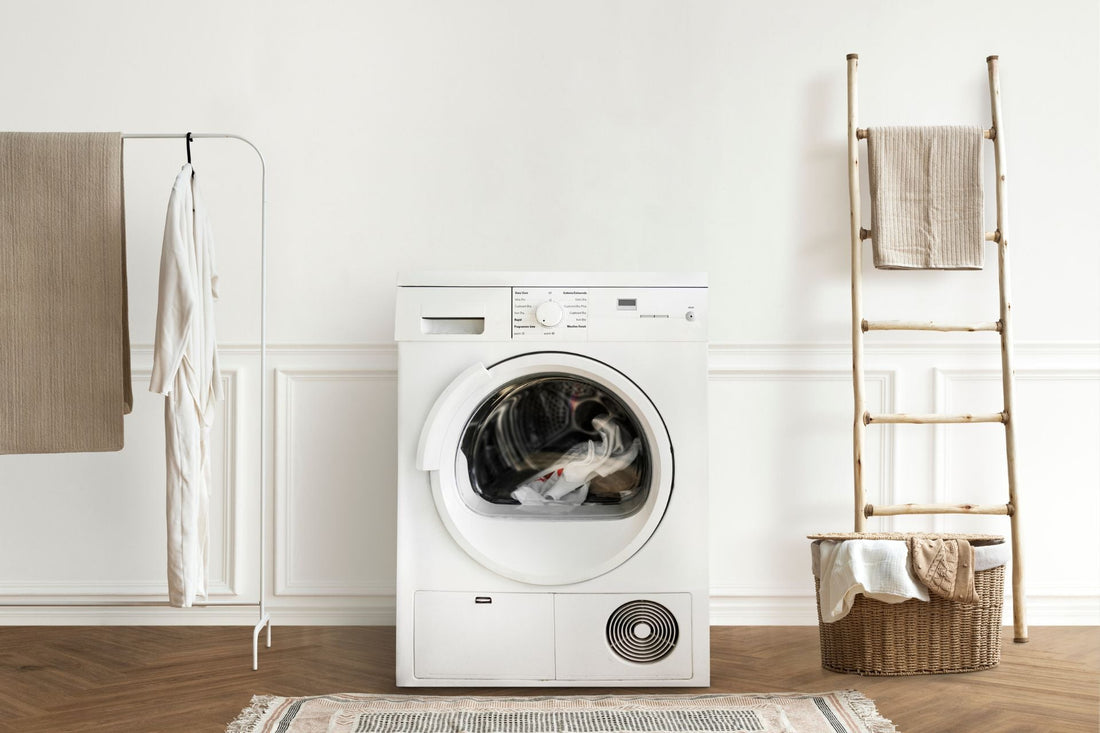
Dryer Not Drying? How to Tell If It’s the Lint Trap or the Vent
Share
It’s frustrating — your clothes come out of the dryer still damp, even after a full cycle. Before you blame the machine or call a repair tech, consider this: the problem might be simpler than you think. In many cases, a clogged lint trap or a blocked dryer vent is the real culprit.
But how do you know which one it is?
In this guide, we’ll help you quickly figure out whether your dryer isn’t drying properly because of the lint trap, the vent, or both — and what you can do about it.
1. First, Understand the Dryer Airflow System
To dry clothes efficiently, your dryer needs two things: hot air and strong airflow. The hot air is generated internally, but the airflow depends on how well lint and moisture can exit the system.
Here’s how it works:
- The lint trap catches loose fibers and lint from your clothes.
- The dryer vent carries warm, moist air out of your home.
When either of these gets blocked, your dryer struggles — and your clothes stay wet.
2. Signs It’s a Clogged Lint Trap
Your lint trap is easy to check, and problems here are usually the first to appear.
Look for these signs:
- Dryer takes longer than usual to dry a small load
- Excess lint on clothes after drying
- You haven’t cleaned the lint screen in over 2–3 loads
- You notice heat, but airflow feels weak when you open the door mid-cycle
What to do: Remove the lint screen and clean it thoroughly. Even better — vacuum inside the lint trap slot using a dryer lint brush or flexible vacuum hose. Many homeowners forget that lint can build up below the screen, which restricts airflow.
3. Signs It’s a Blocked Dryer Vent
The dryer vent runs from the back of your dryer to an external wall or window. When it gets clogged with lint over time, it blocks hot air from escaping — and becomes a serious fire hazard.
Look for these red flags:
- Clothes feel hot but still damp after a full cycle
- Your laundry room feels very humid or musty
- You haven’t cleaned the dryer vent in 6 months or more
- You notice burning smells or unusually hot dryer surfaces
- The vent flap outside doesn’t open much during a cycle
What to do: Use a dryer vent cleaning kit — ideally with a flexible hose and drill adapter — to remove lint buildup deep inside the vent pipe. Even a thin layer of lint can reduce airflow by up to 75%.
4. Why Regular Cleaning Matters (More Than You Think)
A clean lint trap and vent don’t just help clothes dry faster — they:
- Lower your energy bill
- Extend your dryer’s life
- Prevent dryer fires (over 15,000 per year in the U.S.)
- Reduce mold and moisture buildup in the laundry room
And the best part? You don’t need a pro. With the right tools, most homeowners can deep clean their dryer vent in under 30 minutes.
5. Don’t Know Where to Start? Use a Kit That Does It All
At Sealegend, we design tools that make dryer maintenance simple and stress-free. Our best-selling dryer vent cleaning kit connects to most vacuums and drills, helping you:
- Reach deep inside vent pipes
- Remove stubborn lint quickly
- Keep your laundry room safer and more efficient
Pair it with a lint trap brush, and you’ve got everything you need to keep your dryer working like new.
Final Thoughts: Don’t Guess — Check Both
If your dryer isn’t drying like it used to, check the lint trap first. It’s quick, easy, and often the main problem. If that doesn’t solve it, move on to the vent — especially if it hasn’t been cleaned in months.
In many cases, just a 10-minute cleaning can make your dryer feel brand new again.
Bonus Tip: Add This to Your Routine 🧺
- Clean lint trap: every load
- Deep clean lint trap housing: once a month
- Clean dryer vent: every 3–6 months
Your clothes — and your energy bill — will thank you.
